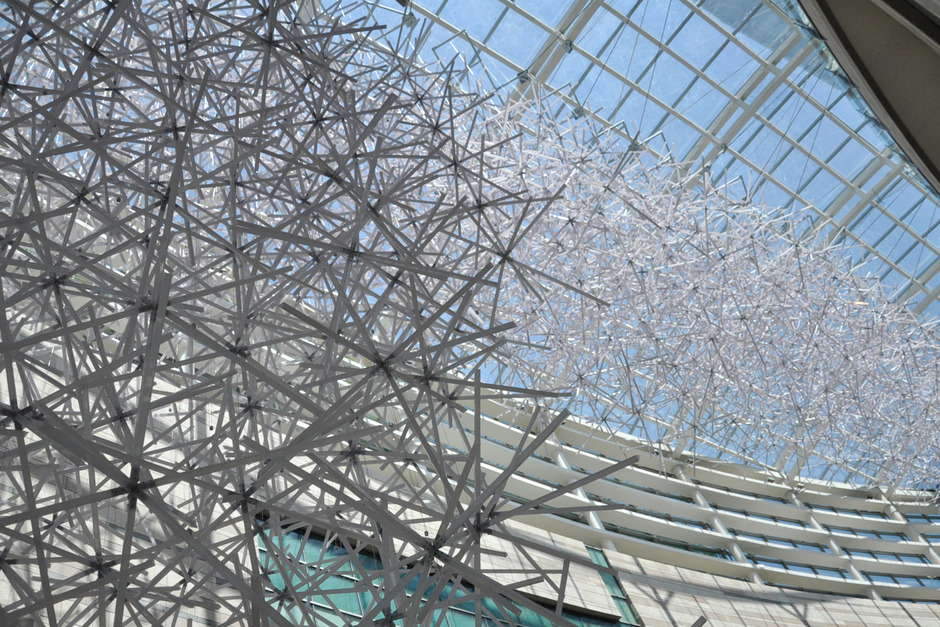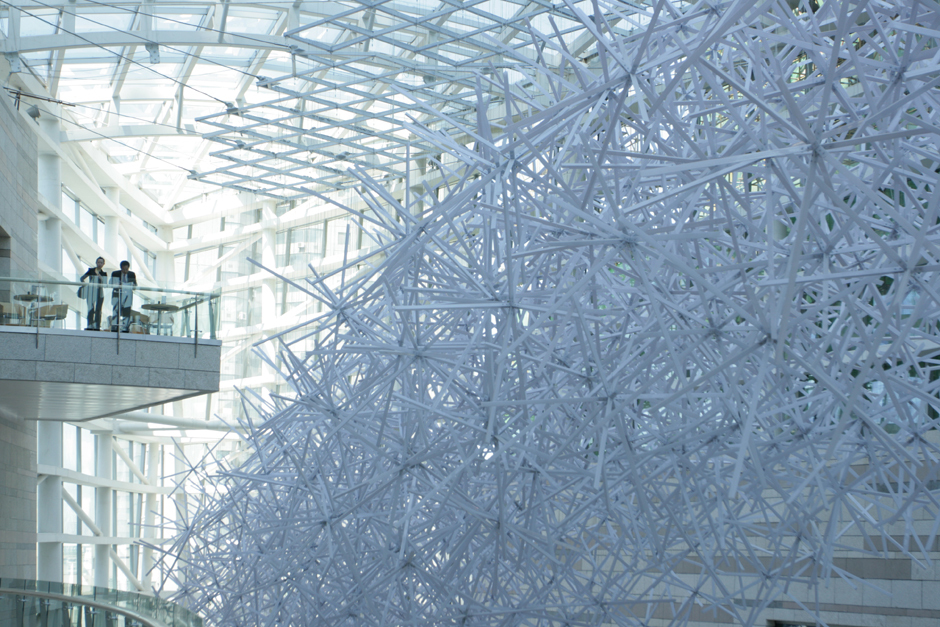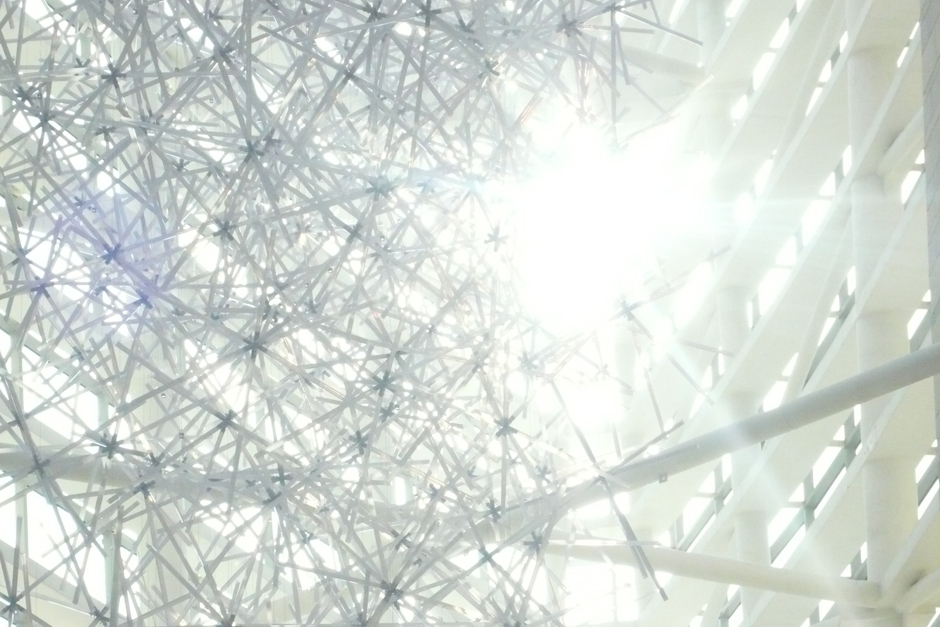
WINTERGARDEN
Shenyang
The Wintergarden installation is an example of BAM’s developing an idea through an equal commitment to physical models and digital imaging software. The project was borne out of a model made from preposterous materials—noodles and sugar. From this miniature, and unlikely, beginning BAM designers worked together, drawing inspiration from everything from bio-luminescent underwater life to Italian bicycles to create the “Urchin Cloud”.
Here at BAM we embrace the latest in digitally driven modeling software and the possibilities for accuracy and detail that it provides while at the same time believing in the great importance of building actual objects in order to better understand the space we are working in and with. With this project, BAM was brought in to create an installation for the cavernous lobby of a new hotel/shopping center in North Eastern China. We began with a model made out of food. Everyone loved it but it was clearly an impossible material, and method, for making a large-scale hanging sculpture. A list was compiled of characteristics to focus on—“fuzziness”, “translucency”, and “randomness”, to name a few—and with those in mind the development process began.
The initial studies of the space focused on sun and shadow patterns in the building throughout the year. Modeling software was used to determine which areas of the space received the most light, which received the least, and when this was happening. Cross-sections of the building were examined for shadow patterns. Returning to the BAM Shape Lab, exhaustive shape studies were completed, heated arguments were had, and the form of the individual units that will make up the cloud was eventually decided upon with unanimous excitement. With the shape of the individual unit and the illuminating information provided by the sun studies, BAM went back to the 3D modeling and determined a number of possible overall shapes/sizes for the installation. Maps were made of “sun volumes”—three dimensional shapes representing varying light intensities within the installation space—arming BAM with an understanding of how to manipulate the piece for maximum effect.
Adhering to the belief that color is AWESOME, color combinations were modeled, tested, and stood up against what was already known about the site. In keeping with BAM tradition there was a constant back and forth between physical models and digital imaging; knowledge, and questions, gleamed from one hand of the process were tried against the other in order to further bolster the designers’ convictions. Physical models were made, transferred to the digital realm, and rendered in an exact 3D image of the works’ eventual home.
As often happens when fabricating idiosyncratic ideas, this project will be built with individual pieces that can’t be found at your local building supply, or anywhere else for that matter. The process of manufacturing the nodes that serve as the core of our “urchins” has proven to be a bit of an uphill battle—time and again plastic manufacturers have told us that “it can’t be done”. The BAM team responds to statements of this nature with an unflappable optimism: “Of course it can, and we’ll do it ourselves”. As a result, all models and prototypes for the Wintergarden have been made in house by BAM designers.
This massive art installation was opened on May 15, 2011.













